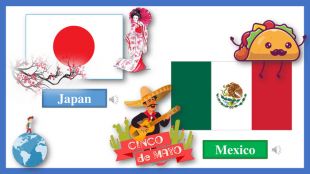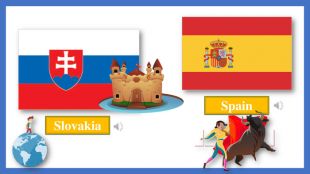Презентація на тему "Countries"





































The flag has three elements on a blue background: the Union Jack, the Commonwealth Star and the Southern Cross. The Union Jack in the upper left corner represents the history of British settlement. Below the Union Jack is a white Commonwealth, or Federation, star. It has seven points representing the unity of the six states and the territories of the Commonwealth of Australia. The star is also featured on the Commonwealth Coat of Arms. The Southern Cross is shown on the flag in white. It is a constellation of five stars that can only be seen from the southern hemisphere and is a reminder of Australia’s geography.
Great Wall of China: Walk along parts of the over 8,850km/5,500 miles long Great Wall which once was the border of the old Chinese empire. The wall stretches across China from the Korean border into the Gobi desert. This is the longest wall in the world and newer archeological findings report that the entire defence works including the Great Wall and all its branches stretches over 21,000km/13,000 miles! Did you know, that the name in ancient Chinese actually meant 'The 10,000-Mile Long Wall' or 'Incredibly Long Wall'?
The first modern pizza, with a tomato base, was made in the Campania region of Naples in 1860. Since then, it has become one of the most beloved foods on the planet. Although the humble pizza has gone through many changes over time, the world’s most delicious pizza can still be found in Naples today. Buon Appetito!
The capital of Slovakia, Bratislava, lies on the borders with Austria and Hungary. That makes the city the only one capital in the world that borders two independent countries. Moreover, Austrian capital Vienna is distant only 60 km! Both cities are stretched on the banks of Danube river and the boat cruise from Vienna to Bratislava takes only 90 minutes.
Even though no one knows where tulips are originally from, it’s certain that the Ottomans loved the flower and helped to make it popular all around Europe. The story goes that a Flemish ambassador, who visited Süleyman the Magnificent, introduced the flower to Holland in the 16th century.


про публікацію авторської розробки
Додати розробку





































